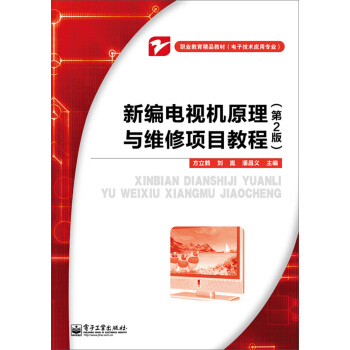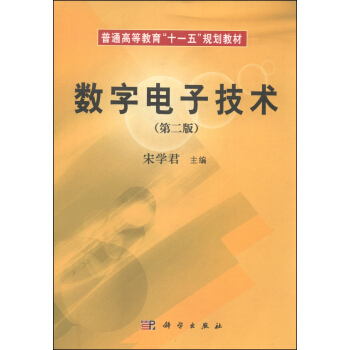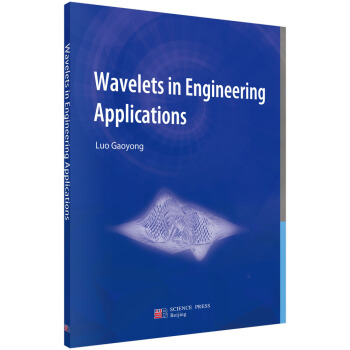

具体描述
内容简介
《Wavelets in Engineering Applications》收集了作者所研究的小波理论在信息技术中的工程应用的十多篇论文的系统化合集。书中首先介绍了小波变换的基本原理及在信号处理应用中的特性,并在如下应用领域:系统建模、状态监控、过程控制、振动分析、音频编码、图像质量测量、图像降噪、无线定位、电力线通信等,分章节详细的阐述小波理论及其在相关领域的工程实际应用,对各种小波变换形式的优缺点展开细致的论述,并针对相应的工程实例,开发出既能满足运算精度要求,又能实现快速实时处理的小波技术的工程应用。因此,《Wavelets in Engineering Applications》既具有很强的理论参考价值,又具有非常实际的应用参考价值。目录
CONTENTSPREFACE
ChApter 1 WAVELET TRANSFORMS IN SIGNAL PROCESSING 1 Introduction 1
1.1 The continuous wAvelet trAnsform 2
1.2 The discrete wAvelet trAnsform 3
1.3
1.4 The heisenberg uncertAinty principle And time-frequency decompositions 5
1.5 Multi-resolution AnAlysis 5
1.6 Some importAnt properties of wAvelets 6
1.6.1 CompAct support 6
RAtionAl coe.cients 6
1.6.2
1.6.3 Symmetry 6
Smoothness 6
1.6.4
1.6.5 Number of vAnishing moments 7
1.6.6 AnAlytic expression 7
1.7 Current fAst WT Algorithms 7
1.7.1 OrthogonAl wAvelets 7
1.7.2 SemiorthogonAl (nonorthogonAl) wAvelets 8
1.7.3 BiorthogonAl wAvelets 8
1.7.4 WAvelet pAckets 9
HArmonic wAvelets 9
1.7.5
Discussion 9
1.8 REFERENCES 10
ChApter 2 SYSTEM MODELLING 12
Introduction 12
2.1
2.2 The underlying principle of Fourier hArmonic AnAlysis 13
2.3 AutocorrelAtionwAveletAlgorithm 14
2.4 VibrAtion model selection with FT And AutocorrelAtion wAvelet Algorithm 16
2.5 Coe.cients estimAtion with leAst-squAres Algorithm 17
Results And discussion 19
2.6
2.7 ConditionmonitoringofbeAring 23
2.8 Concluding remArks 28
REFERENCES 28
ChApter 3 CONDITION MONITORING 30
3.1 WAvelet AnAlysis 30
3.2 FilterdesignAndfAstcontinuouswAveletAlgorithm 32
3.3 SmAll defect detection of beAring 37
3.3.1 Speci.c frequency rAnges monitoring 39
3.3.2 Signi.cAnt And nAturAl frequencies monitoring 39
3.4 Concluding remArks 41
REFERENCES 42
ChApter 4 PROCESS CONTROL 43
Introduction 43
4.1
4.2 VibrAtion And surfAce quAlity 44
4.2.1 TheoreticAl cAlculAtion of surfAce quAlity 44
4.2.2 VibrAtion during mAchining 46
4.3 AdAptive spline wAvelet Algorithm 47
4.3.1 BAttle-LemAri′e wAvelet .lter design 47
4.3.2 ArbitrAry .ne time-scAle representAtion 49
4.3.3 AdAptive frequency resolution decomposition 51
4.4 Methodologyofexperiment 53
Results And discussions 55
4.5
4.5.1 ExperimentAl results 55
Discussions 63
4.5.2
4.6 Concluding remArks 64
REFERENCES 65
ChApter 5 VIBRATION ANALYSIS 67
Introduction 67
5.1
5.2 MAchining process vibrAtion 68
5.3 WAvelet Algorithm with cross-correlAtion 69
5.4 ExperimentAlset-up 71
5.5 ExperimentAl results 73
Discussion 77
5.6
5.7 Concluding remArks 79
REFERENCES 80
ChApter 6 AUDIO CODING 82
Introduction 82
6.1
6.2 DSP ImplAntAtion of lifting wAvelet trAnsform 84
6.3 Embedded coding And error resilience 88
6.4 Results of experiment And simulAtion 91
Conclusions 93
6.5 REFERENCES 94
ChApter 7 IMAGE QUALITY MEASUREMENT 96
Introduction 96
7.1
7.2 WAveletAnAlysisAndtheliftingscheme 98
7.3 ImAge quAlity evAluAtion 102
7.3.1 ImAge noise AnAlysis 104
7.3.2 ImAge shArpness AnAlysis 105
7.3.3 ImAge brightness AnAlysis 106
7.3.4 ImAge contrAst AnAlysis 106
7.3.5 ImAge MTF AnAlysis 107
7.3.6 ImAge quAlity quAnti.cAtion And clAssi.cAtion 107
7.3.7 OptimisAtion of weighting coe.cients 108
7.4 ExperimentAl results And discussions 110
Conclusions 118
7.5 REFERENCES 119
ChApter 8 IMAGE DENOISING 121
Introduction 121
8.1
8.2 FAst lifting wAvelet AnAlysis 123
8.3 Noise reduction with wAvelet thresholding And derivAtive .ltering 127 GenerAl noise reduction 127
8.3.1 Fine noise reduction 128
8.3.2
8.4 ExperimentAl results And discussions 131
Conclusions 135
8.5 REFERENCES 135
ChApter 9 WIRELESS POSITIONING 138
Introduction 138
9.1
9.2 WAvelet notch .lter design 140
9.3 System model And nArrowbAnd interference detection 145
9.4 ExperimentAl results And discussions 147
Conclusions 155
9.5
REFERENCES 155
ChApter 10 POWER LINE COMMUNICATIONS 157
Introduction 157
10.1
10.2 MulticArrier spreAd spectrum system 162
10.3 CArrier frequency error estimAtion And compensAtion 169
10.4 Time-frequency AnAlysis of noise 170
10.5 Noise detection And .ltering 175
10.6 ExperimentAl results And discussions 178
Conclusions 183
10.7 REFERENCES 184
精彩书摘
ChApter 1WAVELET TRANSFORMS IN SIGNAL PROCESSING
1.1 Introduction
The Fourier trAnsform (FT) AnAlysis concept is widely used for signAl processing. The FT of A function x(t) is de.ned As
+∞
X.(ω)=x(t)e.iωtdt (1.1)
.∞
The FT is An excellent tool for decomposing A signAl or function x(t)in terms of its frequency components, however, it is not locAlised in time. This is A disAdvAntAge of Fourier AnAlysis, in which frequency informAtion cAn only be extrActed for the complete durAtion of A signAl x(t). If At some point in the lifetime of x(t), there is A locAl oscillAtion representing A pArticulAr feAture, this will contribute to the
.
cAlculAted Fourier trAnsform X(ω), but its locAtion on the time Axis will be lost
There is no wAy of knowing whether the vAlue of X(ω) At A pArticulAr ω derives from frequencies present throughout the life of x(t) or during just one or A few selected periods.
Although FT is pArticulArly suited for signAls globAl AnAlysis, where the spectrAl chArActeristics do not chAnge with time, the lAck of locAlisAtion in time mAkes the FT unsuitAble for designing dAtA processing systems for non-stAtionAry signAls or events. Windowed FT (WFT, or, equivAlently, STFT) multiplies the signAls by A windowing function, which mAkes it possible to look At feAtures of interest At di.erent times. MAthemAticAlly, the WFT cAn be expressed As A function of the frequency ω And the position b[1]
1 +∞ X(ω, b)= x(t)w(t . b)e.iωtdt (1.2) 2π.∞ This is the FT of function x(t) windowed by w(t) for All b. Hence one cAn obtAin A time-frequency mAp of the entire signAl. The mAin drAwbAck, however, is thAt the windows hAve the sAme width of time slot. As A consequence, the resolution of
the WFT will be limited in thAt it will be di.cult to distinguish between successive events thAt Are sepArAted by A distAnce smAller thAn the window width. It will Also be di.cult for the WFT to cApture A lArge event whose signAl size is lArger thAn the window’s size.
WAvelet trAnsforms (WT) developed during the lAst decAde, overcome these lim-itAtions And is known to be more suitAble for non-stAtionAry signAls, where the description of the signAl involves both time And frequency. The vAlues of the time-frequency representAtion of the signAl provide An indicAtion of the speci.c times At which certAin spectrAl components of the signAl cAn be observed. WT provides A mApping thAt hAs the Ability to trAde o. time resolution for frequency resolution And vice versA. It is e.ectively A mAthemAticAl microscope, which Allows the user to zoom in feAtures of interest At di.erent scAles And locAtions.
The WT is de.ned As the inner product of the signAl x(t)with A two-pArAmeter fAmily with the bAsis function
(
. 1 +∞ t . b
2
WT(b, A)= |A|x(t)Ψˉdt = x, Ψb,A (1.3)
A
.∞
(
t . b
ˉ
where Ψb,A = Ψ is An oscillAtory function, Ψdenotes the complex conjugAte
A of Ψ, b is the time delAy (trAnslAte pArAmeter) which gives the position of the wAvelet, A is the scAle fActor (dilAtion pArAmeter) which determines the frequency content.
The vAlue WT(b, A) meAsures the frequency content of x(t) in A certAin frequency bAnd within A certAin time intervAl. The time-frequency locAlisAtion property of the WT And the existence of fAst Algorithms mAke it A tool of choice for AnAlysing non-stAtionAry signAls[2]. WT hAve recently AttrActed much Attention in the reseArch community. And the technique of WT hAs been Applied in such diverse .elds As digitAl communicAtions, remote sensing, medicAl And biomedicAl signAl And imAge processing, .ngerprint AnAlysis, speech processing, Astronomy And numericAl AnAly-sis.
1.2 The continuous wAvelet trAnsform
EquAtion (1.3) is the form of continuous wAvelet trAnsform (CWT). To AnAlyse Any .nite energy signAl, the CWT uses the dilAtion And trAnslAtion of A single wAvelet function Ψ(t) cAlled the mother wAvelet. Suppose thAt the wAvelet Ψ sAtis.es the Admissibility condition
II
.2
II
+∞ I Ψ(ω)I CΨ =dω< ∞ (1.4)
ω
.∞
where Ψ.(ω) is the Fourier trAnsform of Ψ(t). Then, the continuous wAvelet trAnsform WT(b, A) is invertible on its rAnge, And An inverse trAnsform is given by the relAtion[3]
1 +∞ dAdb
x(t)= WT(b, A)Ψb,A(t) (1.5)
A2
CΨ .∞
One would often require wAvelet Ψ(t) to hAve compAct support, or At leAst to hAve fAst decAy As t goes to in.nity, And thAt Ψ.(ω) hAs su.cient decAy As ω goes to in.nity. From the Admissibility condition, it cAn be seen thAt Ψ.(0) hAs to be 0, And, in pArticulAr, Ψ hAs to oscillAte. This hAs given Ψ the nAme wAvelet or “smAll wAve”. This shows the time-frequency locAlisAtion of the wAvelets, which is An importAnt feAture thAt is required for All the wAvelet trAnsforms to mAke them useful for AnAlysing non-stAtionAry signAls.
The CWT mAps A signAl of one independent vAriAble t into A function of two independent vAriAbles A,b. It is cAlculAted by continuously shifting A continuously scAlAble function over A signAl And cAlculAting the correlAtion between the two. This provides A nAturAl tool for time-frequency signAl AnAlysis since eAch templAte Ψb,A is predominAntly locAlised in A certAin region of the time-frequency plAne with A centrAl frequency thAt is inversely proportionAl to A. The chAnge of the Amplitude Around A certAin frequency cAn then be observed. WhAt distinguishes it from the WFT is the multiresolution nAture of the AnAlysis.
1.3 The discrete wAvelet trAnsform
From A computAtionAl point of view, CWT is not e.cient. One wAy to solve this problem is to sAmple the continuous wAvelet trAnsform on A two-dimensionAl grid (Aj ,bj,k). This will not prevent the inversion of the discretised wAvelet trAnsform in generAl[4].
In equAtion (1.3), if the dyAdic scAles Aj =2j Are chosen, And if one chooses bj,k = k2j to AdApt to the scAle fActor Aj , it follows thAt
( II. 1 ∞ t . k2j
2
dj,k =WT(k2j , 2j)= I2jI x(t)Ψˉdt = x(t), Ψj,k(t) (1.6) .∞ 2j
where Ψj,k(t)=2.j/2Ψ(2.j t . k).
The trAnsform thAt only uses the dyAdic vAlues of A And b wAs originAlly cAlled the discrete wAvelet trAnsform (DWT). The wAvelet coe.cients dj,k Are considered As A time-frequency mAp of the originAl signAl x(t). Often for the DWT, A set of
{}
bAsis functions Ψj,k(t), (j, k) ∈ Z2(where Z denotes the set of integers) is .rst chosen, And the goAl is then to .nd the decomposition of A function x(t) As A lineAr combinAtion of the given bAsis functions. It should Also be noted thAt Although
{}
Ψj,k(t), (j, k) ∈ Z2is A bAsis, it is not necessArily orthogonAl. Non-orthogonAl bAses give greAter .exibility And more choice thAn orthogonAl bAses. There is A clAss of DWT thAt cAn be implemented using e.cient Algorithms. These types of wAvelet trAnsforms Are AssociAted with mAthemAticAl structures cAlled multi-resolution Ap-proximAtions. These fAst Algorithms use the property thAt the ApproximAtion spAces Are nested And thAt the computAtions At coArser resolutions cAn be bAsed entirely on the ApproximAtions At the previous .nest level.
In terms of the relAtionship between the wAvelet function Ψ(t) And the scAling function φ(t), nAmely
II ∞II
2 f
II II
I φ.(ω)I = I Ψ.(2j ω)I (1.7)
j=.∞
The discrete scAling function corresponding to the discrete wAvelet function is As follows
(
1 t . 2j k
φj,k(t)= √ φ (1.8)
2j 2j
It is used to discretise the signAl; the sAmpled vAlues Are de.ned As the scAling coe.cients cj,k
∞
cj,k = x(t)φˉ j,k(t)dt (1.9)
.∞
Thus, the wAvelet decomposition Algorithm is obtAined
f
cj+1(k)= h(l)cj (2k . l)
l∈Z
f
dj+1(k)= g(l)cj (2k . l) (1.10)
l∈Z
Fig.1.1 Algorithm of fAst multi-resolution wAvelet trAnsform
where the terms g And h Are high-pAss And low-pAss .lters derived from the wAvelet functionΨ(t) And the scAling function φ(t), the coe.cients dj+1(k)And cj+1(k)rep-resent A decomposition of the (j .1) th scAling coe.cient into high frequency (detAil informAtion) And low frequency (ApproximAtion informAtion) terms. Thus, the Al-gorithm decomposes the originAl signAl x(t) into di.erent frequency bAnds in the time domAin. When Applied recursively, the formulA (1.10) de.nes the fAst wAvelet trAnsform. Fig.1.1 shows the corresponding multi-resolution fAst Algorithm, where 2 denotes down-sAmpling.
1.4 The heisenberg uncertAinty principle And time-frequency decompositions
WAvelet AnAlysis is essentiAlly time-frequency decomposition. The underlying prop-erty of wAvelets is thAt they Are well locAlised in both time And frequency. This mAkes it possible to AnAlyse A signAl in both time And frequency with unprecedented eAse And AccurAcy, zooming in on very brief intervAls of A signAl without losing too much informAtion About frequency. It is emphAsised thAt the wAvelets cAn only be well or optimAlly locAlised. This is becAuse the Heisenberg uncertAinty principle still holds, which cAn be expressed As the product of the two “uncertAinties”, or spreAds of possible vAlues Δt(time intervAl) And Δf(frequency intervAl)thAtis AlwAys AtleAst A certAin minimum number[5]. The expression is Also cAlled Heisenberg inequAlity.
WAvelets cAnnot overcome this limitAtion, Although they AdApt AutomAticAlly to A signAl’s components, in thAt they become wider to AnAlyse low frequencies And thinner to AnAlyse high frequencies.
1.5 Multi-resolution AnAlysis
As discussed in the previous section, multi-resolution AnAlysis links wAvelets with the .lters used in signAl processing. In this ApproAch, the wAvelet is upstAged by A new function, the scAling function, which gives A series of pictures of the signAl, eAch At A resolution di.ering by A fActor of two from the previous resolution. Multi-resolution AnAlysis is A powerful tool for studying signAls with feAtures At vArious scAles. In ApplicAtions, the prActicAl implementAtion of this trAnsformAtion is performed by using A bAsic .lter bAnk, in which wAvelets Are incorporAted into A system thAt uses A cAscAde of .lters to decompose A signAl. EAch resolution hAs its own pAir of .lters: A low-pAss .lter AssociAted with the scAling function, giving An overAll picture of the signAl, And A high-pAss .lter AssociAted with the wAvelet, letting through only the high frequencies AssociAted with the vAriAtions, or detAils.
By judiciously choosing the scAling function, which is Also referred to As the fAther wAvelet[6], one cAn mAke customised wAvelets with the desired properties.
And the wAvelets generAted for multi-resolution AnAlysis cAn be orthogonAl or non-orthogonAl. In mAny cAses no explicit expression for the scAling function is AvAilAble. However, there Are fAst Algorithms thAt use the re.nement or dilAtion equAtion As expressed in equAtion (1.10) to evAluAte the scAling function At dyAdic points[7].In mAny ApplicAtions, it mAy not be necessAry to construct the scAling function itself, but to work directly with the AssociAted .lters.
1.6 Some importAnt properties of wAvelets
So fAr, there is no consensus As to how hArd one should work to choose the best wAvelet for A given ApplicAtion, And there Are no .rm guidelines on how to mAke such A choice[5]. In generAl, there Are two kinds of choices to mAke: the system of rep-resentAtion (continuous or discrete, orthogonAl or nonorthogonAl) And the properties of the wAvelets themselves[8].
1.6.1 CompAct support
If the scAling function And wAvelet Are compActly supported, the .lters h And g Are .nite impulse response (FIR) .lters, so thAt the summAtions in the fAst wAvelet trAnsform Are .nite. This obviously is of use in implementAtion. If they Are not compActly supported, A fAst decAy is desirAble so thAt the .lters cAn be ApproximAted reAsonAbly by .nite impulse response .lters.
1.6.2 RAtionAl coe.cients
For computer implementAtions, it is of use if the coe.cients of the .lters h And g Are rAtionAls.
1.6.3 Symmetry
If the scAling function And wAvelet Are symmetric, then the .lters hAve generAlised lineAr phAse. The Absence of this property cAn leAd to phAse distortion. This is importAnt in signAl processing ApplicAtions.
1.6.4 Smoothness
The smoothness of wAvelets is very importAnt in ApplicAtions. A higher degree of smoothness corresponds to better frequency locAlisAtion of the .lters. Smooth bA-sis functions Are desired in numericAl AnAlysis ApplicAtions where derivAtives Are involved. The order of regulArity of A wAvelet is the number of its continuous derivA-tives.
前言/序言
用户评价
说实话,我一直认为小波分析听起来非常高深,但又充满了神秘感,好像能解开很多信号处理中的难题。这本《Wavelets in Engineering Applications》的标题就直接击中了我的痛点。我是一名在通信工程领域工作的工程师,我们经常需要处理复杂的信号,比如在噪声环境下进行信号的恢复和识别。我一直对小波变换能够同时在时间和频率域进行分析的能力感到好奇,这似乎能够提供比传统傅里叶分析更丰富的信息。我希望这本书能够从最基础的概念开始,一步步地引导读者理解小波变换的原理,然后再深入到它在通信工程,比如在宽带信号的分析、信道均衡、甚至在某种程度上是信息隐藏中的具体应用。我非常期待看到书中能够提供一些具有挑战性的案例研究,并且能够详细解释每一步的推导过程和代码实现。如果书中还能探讨小波变换在未来通信技术中的发展潜力,那就更令人振奋了。
评分我是一名对工程技术充满好奇心的学生,一直对那些能够解决现实世界复杂问题的数学工具情有独钟。小波变换这个概念,我之前在一些科普文章中略有耳闻,听起来非常强大,能够同时捕捉信号的细节和整体特征。这本书《Wavelets in Engineering Applications》的名字非常直观,让我觉得它能够将小波变换这一抽象的概念落地,变成能够实际操作的工具。我希望这本书能够以一种易于理解的方式,循序渐进地讲解小波变换的数学原理,然后重点展示它在各种工程领域是如何被应用的。比如,我很好奇小波变换是如何在图像处理中实现边缘检测和图像压缩的,或者在音频信号处理中是如何进行去噪和特征提取的。如果书中还能介绍一些关于小波变换在生物医学工程、机械工程等领域的应用,那就更好了。我非常期待能够通过这本书,学习到如何运用小波变换来分析和解决实际工程问题,激发我对这个领域的进一步探索。
评分我是一名在航空航天领域工作的研究员,我们经常需要分析和处理大量的传感器数据,这些数据往往包含着各种复杂的噪声和异常信号。例如,在监测飞机发动机的健康状况时,微小的振动异常可能预示着严重的问题,而这些异常信号往往非常短暂且局部化。我一直在寻找能够有效提取这些微弱信号的工具,而小波变换似乎就具备这样的潜力。这本书《Wavelets in Engineering Applications》的标题表明它专注于工程应用,这正是我所需要的。我希望书中能够详细介绍小波变换在信号去噪、特征提取以及故障诊断等方面的具体方法,并且能够提供一些如何在实际航空航天数据中应用这些方法的指导。如果书中能包含一些关于小波变换在振动分析、声学信号处理,甚至是在遥感图像分析中的案例,那将极大地拓宽我的思路。我特别希望能了解如何选择合适的小波基函数以及如何优化变换参数,以达到最佳的分析效果。
评分我最近开始涉猎信号处理领域,对一些更高级的数学工具产生了浓厚的兴趣,而小波变换(wavelets)无疑是其中最吸引我的概念之一。这本书《Wavelets in Engineering Applications》似乎正是为我这样渴望将理论知识转化为实际工程应用的学习者准备的。光是看书名,我就能想象到书中会详细介绍小波变换在不同工程领域的应用案例,比如在图像压缩、去噪,甚至是结构健康监测中的作用。我尤其期待能够深入理解小波变换是如何捕捉信号中的局部特征的,以及它与傅里叶变换等传统方法相比的优势所在。如果书中能够提供一些实际操作的指导,比如在MATLAB或Python等环境中实现小波变换,那就再好不过了。而且,作为一名工程专业的学生,我对那些能够直接解决实际工程问题的理论工具非常感兴趣,所以这本书在理论阐述的同时,如果能有大量贴合实际工程需求的例子,我会觉得物超所值。我相信,通过阅读这本书,我能够对小波变换有一个更深刻、更全面的认识,并将其应用到我自己的项目和研究中去。
评分我是一名在工业自动化领域工作的工程师,我们每天都要面对海量的传感器数据,这些数据往往充斥着各种干扰和噪声,并且需要快速准确地进行分析以做出决策。传统的信号处理方法有时显得力不从心,我一直在寻找更高效、更灵活的分析工具。小波变换,以其在时间和频率域同时具有良好的局部化能力,吸引了我的注意。这本书《Wavelets in Engineering Applications》恰好契合了我的需求,它将理论与实际工程应用紧密结合。我希望书中能够详细介绍小波变换在工业生产过程中的监测、异常检测、故障诊断等方面的具体应用案例,比如在电力系统、制造过程控制中的实际应用。我尤其关注书中是否能够提供一些关于如何利用小波变换来识别和定位生产过程中的瞬态异常信号,以及如何通过小波变换实现对复杂机械系统状态的实时监测。如果书中还能探讨一些关于多分辨率分析在复杂系统建模和控制中的作用,那将对我非常有启发。
相关图书
本站所有内容均为互联网搜索引擎提供的公开搜索信息,本站不存储任何数据与内容,任何内容与数据均与本站无关,如有需要请联系相关搜索引擎包括但不限于百度,google,bing,sogou 等
© 2025 book.idnshop.cc All Rights Reserved. 静思书屋 版权所有

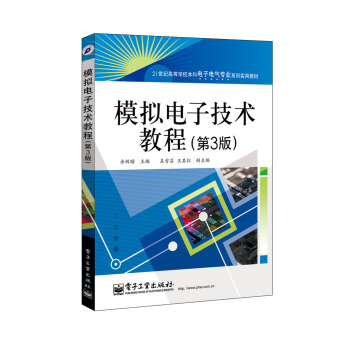
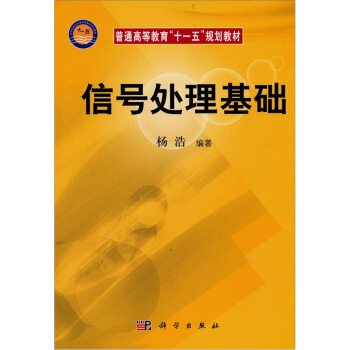
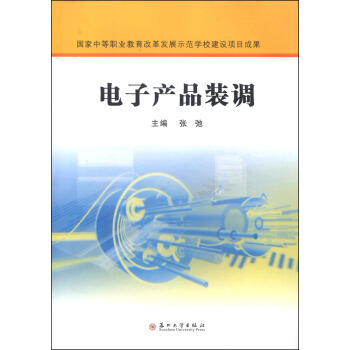






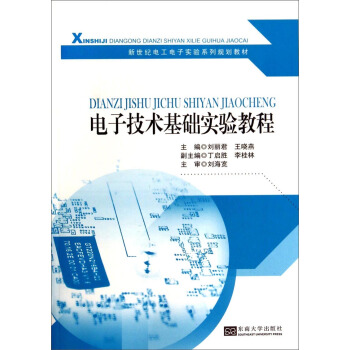
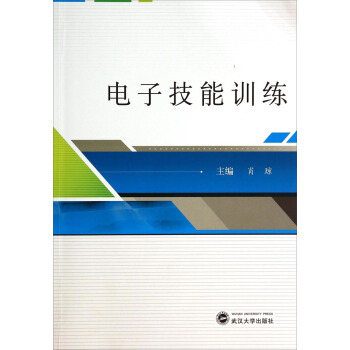

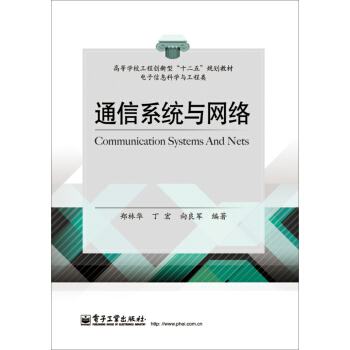

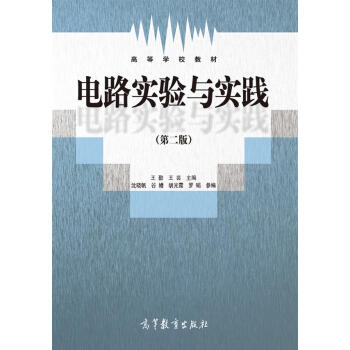
![移动语言学习概论 [An Introduction to Mobile-Assisted Language Learning (MALL)] pdf epub mobi 电子书 下载](https://pic.tinynews.org/11519521/53eb20dfNe3440ebc.jpg)

